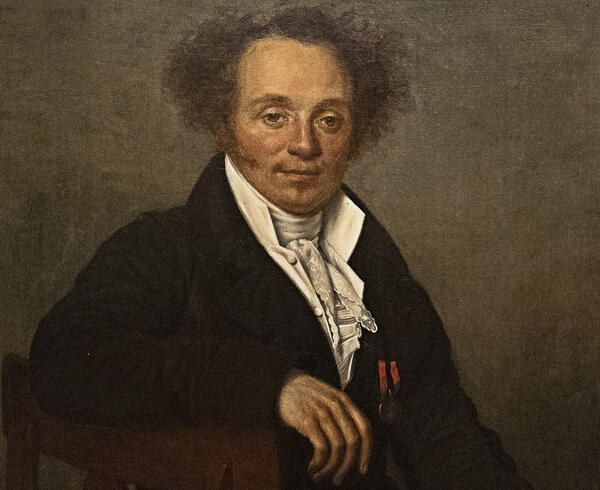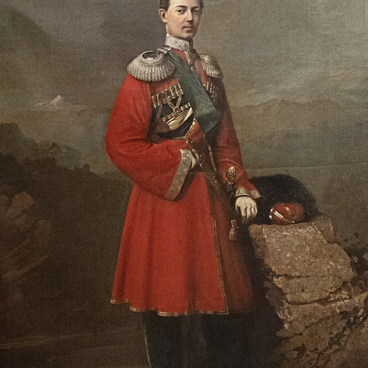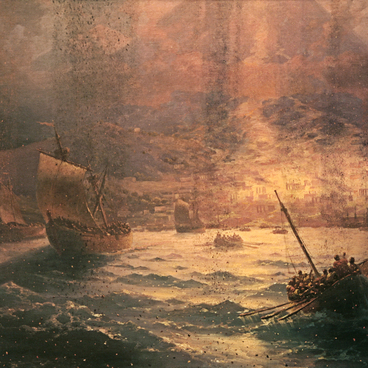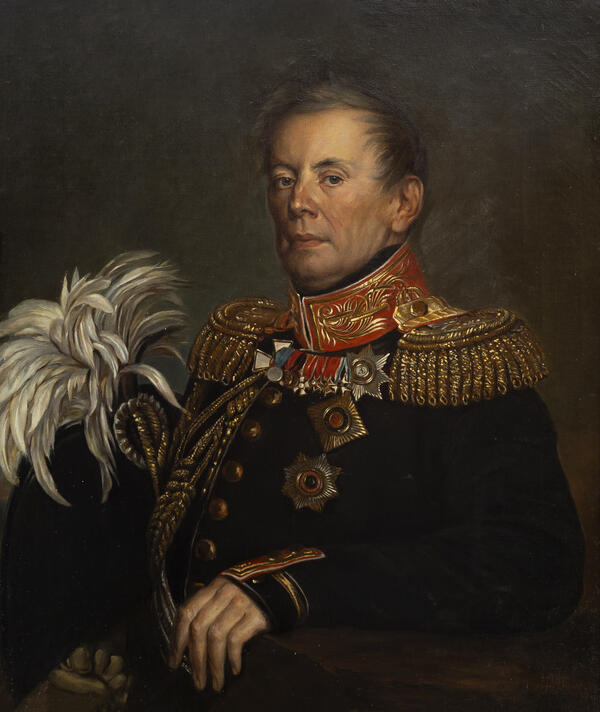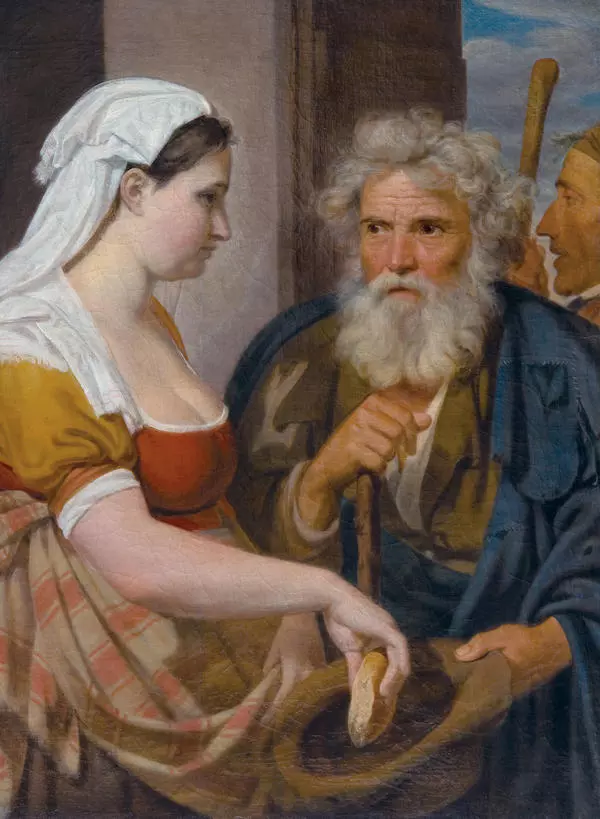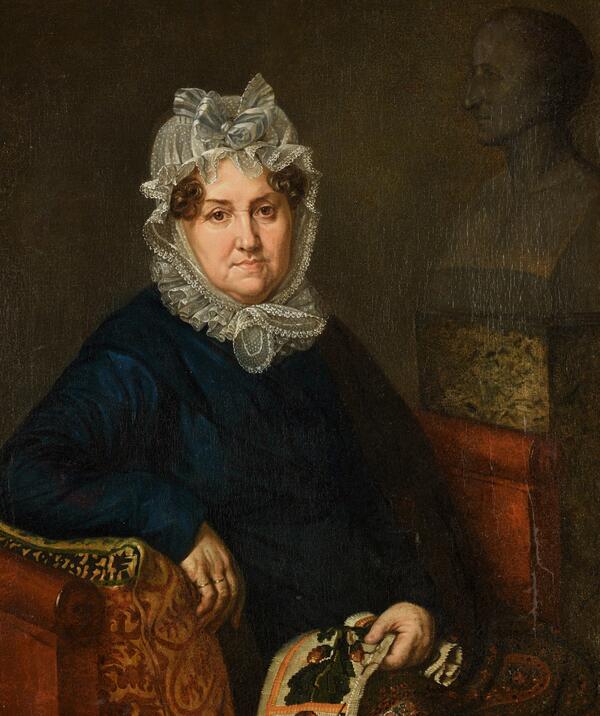Alexander Varnek (Varnik until 1833) was born in 1782 in the family of furniture maker Georg Dietrich Varnik, who moved to St. Petersburg from Danzig. In 1803, the artist graduated from the Academy of Arts, having received the Great Gold Medal for the painting ‘Portrait of a Painter’ and the right to study abroad.
In 1804, Varnek went to Rome, where he temporarily settled. He often painted landscapes and created sketches from antique sculptures, but portrait painting became the main genre of his work. According to the contemporaries, Varnek’s portraits were characterized by their perfect quality, truthfulness, pleasant coloring and special lighting. For this, Varnek was nicknamed the “Russian van Dyck”.
In the first half of the 19th century, the art of painting went through considerable changes: there emerged new pictorial techniques and portrait compositions. The romantic portrait became a program genre. In 1805–1806, Varnek created “Self-Portrait with a Palette and Brushes in Hand”, in which he used the artistic techniques of romanticism — reserved tones, the contrast of light and shadow, the restrained solemnity of the image.
The artist payed close attention to details — he noticed memorable features, character traits, facial expressions and gestures. Varnek’s portraits combined aristocracy and reliability. This is how he portrayed the translator and writer Ivan Butovsky.
To close the distance between the model and the viewer, Varnek painted Butovsky in a relaxed, casual pose and a simple everyday dress. Thanks to the restrained coloring of the picture, no extra effects distract our attention from the sitter. So, the viewer has the feeling of a simple confidential conversation with the person depicted in the painting. This feature was characteristic of the portrait art of the 19th century as a whole.
Ivan Butovsky was a hero of the Patriotic War of 1812, fought at Austerlitz. He also took part in the Russo-Swedish war of 1808–1809. At the age of 37, Butovsky retired and took up literary activity.
Alexander Varnek painted about thirty portraits of the participants of the war of 1812.
From the 1820s, Alexander Varnek almost gave up painting portraits. He taught at the Academy of Arts, and from 1824 became the curator of the collection of prints and drawings in the Hermitage.
In 1804, Varnek went to Rome, where he temporarily settled. He often painted landscapes and created sketches from antique sculptures, but portrait painting became the main genre of his work. According to the contemporaries, Varnek’s portraits were characterized by their perfect quality, truthfulness, pleasant coloring and special lighting. For this, Varnek was nicknamed the “Russian van Dyck”.
In the first half of the 19th century, the art of painting went through considerable changes: there emerged new pictorial techniques and portrait compositions. The romantic portrait became a program genre. In 1805–1806, Varnek created “Self-Portrait with a Palette and Brushes in Hand”, in which he used the artistic techniques of romanticism — reserved tones, the contrast of light and shadow, the restrained solemnity of the image.
The artist payed close attention to details — he noticed memorable features, character traits, facial expressions and gestures. Varnek’s portraits combined aristocracy and reliability. This is how he portrayed the translator and writer Ivan Butovsky.
To close the distance between the model and the viewer, Varnek painted Butovsky in a relaxed, casual pose and a simple everyday dress. Thanks to the restrained coloring of the picture, no extra effects distract our attention from the sitter. So, the viewer has the feeling of a simple confidential conversation with the person depicted in the painting. This feature was characteristic of the portrait art of the 19th century as a whole.
Ivan Butovsky was a hero of the Patriotic War of 1812, fought at Austerlitz. He also took part in the Russo-Swedish war of 1808–1809. At the age of 37, Butovsky retired and took up literary activity.
Alexander Varnek painted about thirty portraits of the participants of the war of 1812.
From the 1820s, Alexander Varnek almost gave up painting portraits. He taught at the Academy of Arts, and from 1824 became the curator of the collection of prints and drawings in the Hermitage.

